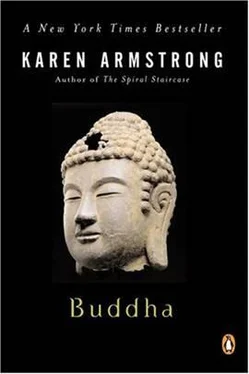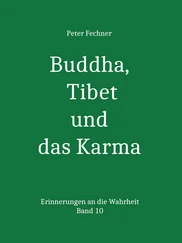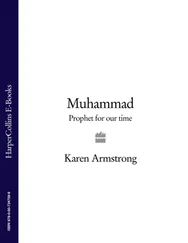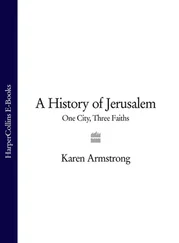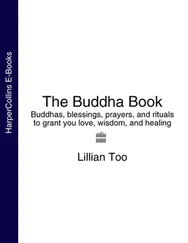Kosala and Magadha were far more efficiently run than the old republics, where there was constant infighting and civil strife. These modern kingdoms had streamlined bureaucracies and armies which professed allegiance to the king alone, instead of to the tribe as a whole. This meant that each king had a personal fighting machine at his disposal, which gave him the power to impose order on his domains and to conquer neighboring territory. These modern monarchs were also able to police the new trade routes efficiently, and this pleased the merchants on whom the economy of the kingdoms depended. The region enjoyed a new stability, but at a cost. Many were disturbed by the violence and ruthlessness of the new society, where kings could force their will upon the people, where the economy was fueled by greed, and where bankers and merchants, locked in aggressive competition, preyed upon one another. The traditional values seemed to be crumbling, a familiar way of life was disappearing, and the order that was taking its place was frightening and alien. It was no wonder that so many people felt life was dukkha, a word usually translated as “suffering,” but whose meaning is better conveyed by such terms as “unsatisfactory,” “flawed,” and “awry.”
In this changing society, the ancient Aryan religion of the brahmins seemed increasingly out of place. The old rituals had suited a settled rural community, but were beginning to seem cumbersome and archaic in the more mobile world of the cities. Merchants were constantly on the road and could not keep the fires burning, nor could they observe the uposatha days. Since these new men fit less and less easily into the caste system, many of them felt that they had been pushed into a spiritual vacuum. Animal sacrifice had made sense when stockbreeding had been the basis of the economy, but the new kingdoms depended upon agricultural crops. Cattle were becoming scarce and sacrifice seemed wasteful and cruel-too reminiscent of the violence that now characterized so much of public life. At a time when the urban communities were dominated by self-made men who had to rely on themselves, people increasingly resented the dominance of the brahmins and wanted to control their own spiritual destiny. Moreover, the sacrifices did not work. The brahmins alleged that these ritual actions ( kamma ) would bring the people riches and material success in this world, but these promised benefits usually failed to materialize. In the new economic climate, people in the cities wanted to concentrate on kamma which would yield a sounder investment.
The modern monarchies and the cities, dominated by a market economy, had made the peoples of the Gangetic region highly conscious of the rate of change. Urban dwellers could see for themselves that their society was being rapidly transformed; they could measure its progress and were experiencing a lifestyle that was very different from the repetitive rhythms of a rural community, which was based on the seasons and where everybody did the same things year after year. In the towns, people were beginning to realize that their actions ( kamma ) had long-term consequences, which they themselves might not experience but which they could see would affect future generations. The doctrine of reincarnation, which was of quite recent origin, suited this world much better than did the old Vedic faith. The theory of kamma stated that we had nobody to blame for our fate but ourselves and that our actions would reverberate in the very distant future. True, kamma could not release human beings from the wearisome round of samsara, but good kamma would yield a valuable return since it ensured a more enjoyable existence next time. A few generations earlier, the doctrine of reincarnation had been a highly controversial one, known only to an elite few. But by Gotama’s time, when people had become conscious of cause and effect in an entirely new way, everybody believed in it-even the brahmins themselves.
But as in the other Axial countries, the people of northern India had begun to experiment with other religious ideas and practices which seemed to speak more directly to their altered conditions. Shortly before Gotama’s birth, a circle of sages in the regions to the west of the Gangetic plain staged a secret rebellion against the old Vedic faith. They began to create a series of texts which were passed secretly from master to pupil. These new scriptures were called the Upanisads, a title which stressed the esoteric nature of this revolutionary lore, since it derived from the Sanskrit apa-ni-sad (to sit near). The Upanisads ostensibly relied upon the old Vedas, but reinterpreted them, giving them a more spiritual and interiorized significance; this marked the beginning of the tradition now known as Hinduism, another of the great religions formed during the Axial Age. The goal of the sages’ spiritual quest was the absolute reality of brahman , the impersonal essence of the universe and the source of everything that exists. But brahman was not simply a remote and transcendent reality; it was also an immanent presence which pervaded everything that lived and breathed. In fact, by dint of the Upanisadic disciplines, a practitioner would find that brahman was present in the core of his own being. Salvation lay not in animal sacrifice, as the brahmins had taught, but in the spiritual realization that brahman, the absolute, eternal reality that is higher even than the gods, was identical to one’s own deepest Self (atman).
The idea of an eternal and absolute Self would greatly exercise Gotama, as we shall see. It was a remarkable insight. To believe that one’s innermost Self was identical with brahman , the supreme reality, was a startling act of faith in the sacred potential of humanity. The classic expression of this doctrine is found in the early Chandogya Upanisad. The brahmin Uddalaka wanted to show his son Svetaketu, who prided himself on his knowledge of the Vedas, the limitations of the old religion. He asked Svetaketu to dissolve a lump of salt in a beaker of water. The next morning, the salt had apparently vanished, but, of course, when Svetaketu sipped the water he found that the salt permeated the whole beakerful of liquid, even though it could not be seen. This was just like brahman , Uddalaka explained; you could not see It but nevertheless It was there. “The whole universe has this first essence ( brahman ) as its Self ( atman ) . That is what the Self is; that is what you are, Svetaketu!” This was rebellious indeed; once you understood that the Absolute was in everything, including yourself, there was no need for a priestly elite. People could find the ultimate for themselves, without cruel, pointless sacrifices, within their own being.
But the sages of the Upanisads were not alone in the rejection of the old faith of the brahmins . In the eastern part of the Gangetic region, most of the monks and ascetics who lived in the forest were unfamiliar with the spirituality of the Upanisads, which was still an underground, esoteric faith centered in the western plains. Some of the new ideas had leaked through on a popular level, however. There was no talk in the eastern Ganges of brahman , which is never mentioned in the Buddhist scriptures, but a folk version of this supreme principle had become popular in the cult of the new god Brahma, who, it was said, dwelt in the highest heaven of all. Gotama does not seem to have heard of brahman , but he was aware of Brahma, who, as we shall see, played a role in Gotama’s own personal drama. When Gotama left Kapilavatthu, he headed for this eastern region, traveling throughout the rest of his life in the new kingdoms of Kosala and Magadha and in the old adjacent republics. Here the spiritual rejection of the ancient Aryan traditions took a more practical turn. People were less interested in metaphysical speculation about the nature of ultimate reality and more concerned with personal liberation. The forest-monks may not have been conversant with the transcendent brahman , but they longed to know atman, the absolute Self within, and were devising various ways of accessing this eternal, immanent principle. The doctrine of the Self was attractive because it meant that liberation from the suffering of life was clearly within reach and required no priestly intermediaries. It also suited the individualism of the new society and its cult of self-reliance. Once a monk had found his real Self, he would understand at a profound level that pain and death were not the last words about the human condition. But how could a monk find this Self and thus gain release from the endless cycle of samsara? Even though the Self was said to be within each person, the monks had discovered that it was very difficult to find it.
Читать дальше
